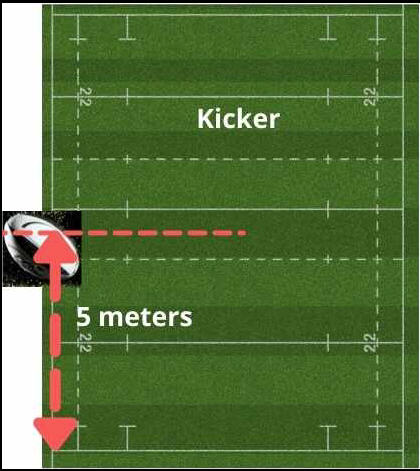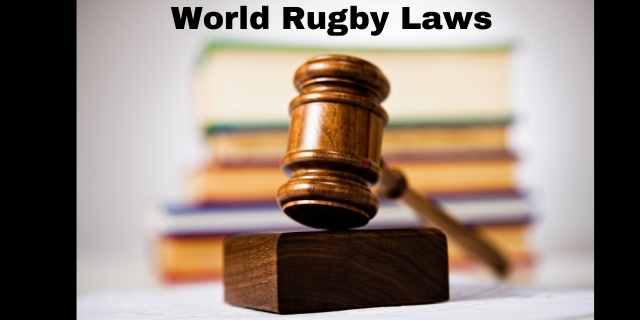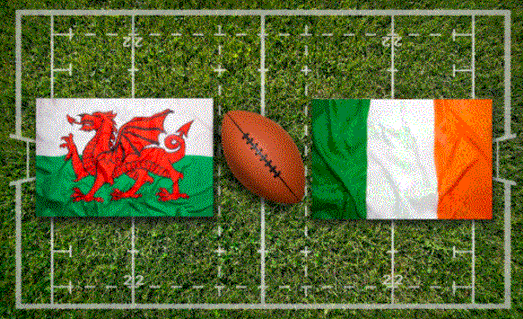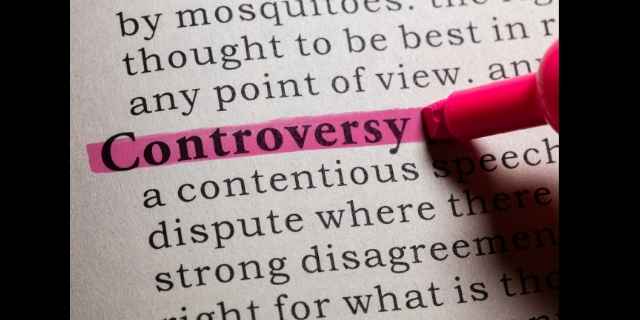Technically, a quick lineout is not a lineout – it should be called a quick throw as the lineout hasn’t actually formed. But we’ll refer to both a quick lineout and a quick throw in this article as being the same thing!
It’s an exciting move that can lead to a try against surprised opponents. However, there are strict rules that determine whether the quick throw is legal or not.
We’ll break down the rugby laws into clear scenarios for when a quick throw or lineout is allowed.
And we’ll look at some famous (or infamous) examples when a quick throw that should have been illegal was ruled as okay by the referees.
What Is A Quick Lineout Or Throw In Rugby?
When the ball goes into touch across the sidelines, the opposition usually takes a lineout. This means that some or all the forwards from both sides line up and compete for the ball thrown in by the hooker.
But in some circumstances, the opposition has another option. A player can pick up the ball in touch and throw it to a teammate on the pitch.
The idea is that the opposition hasn’t had time to get their defense organized and is taken by surprise. It can lead to “easy” tries with a winger racing unopposed to the try line.
So, why don’t we see this all the time? Because there are strict rules that govern quick throws in rugby.
Let’s start with where the quick throw can be taken.
Where Can A Quick Throw Be Taken?
When the ball goes over the sideline, a player can’t bring it up the tramlines toward the opposition posts before flinging it in.
You will see players running forward with the ball, but this is when a ball has been kicked. The trajectory can make it land well down the pitch, but that’s not where the ball went out of play.
The player is entitled to bring the ball back to the point where it went over the try line. But he doesn’t have to! He can take a quick throw anywhere from where the ball went over the line back to his own posts.
A picture is worth a thousand words. Here’s a diagram to make this clear. I’ve also marked a point that is five meters in from the sideline. The throw has to travel five meters to be valid i.e. the player’s teammate can’t catch it within those five meters.

Why Do Players Wrestle For The Ball When They Are Over The Sideline?
You’ll often see one player trying to grab the ball off an opposition player who has been tackled or pushed over the sideline. This can turn into quite a wrestling match.
What’s going on?
The laws of the sport are clear: the player who carries the ball into touch must release it immediately to allow the opposition to take a quick throw.
Usually, the opposition players have no intention of taking the quick throw! But if it looks like they are being prevented from doing so, they can milk a penalty from the referee.
I saw penalties being awarded frequently a few seasons ago, but they’re less common now as teams have wised up. A couple of the ball carrier’s teammates will rush to “line up” on the field.
This shows the referee that the lineout has formed. A quick penalty isn’t allowed in this case.
We also used to see the “thrower” chuck the ball at the nearest opposition player. In theory, the opponent has stopped the ball from traveling five meters and this could be a penalty.
In practice, referees take a dim view of play-acting and milking penalties. If the opponent is walking away, the thrower will get a stern talking to.
The Same Ball Must Be Used For The Quick Lineout Or Throw

This is the law: a quick throw can’t be taken if “a different ball is used from the one that originally went into touch.“
Plenty of kicks for touch sail into the crowd. Some professional sports have a tradition that the person who catches a ball gets to keep it. That’s not the case in rugby! The ball will be thrown down to a ball boy.
But this can take a bit of time, and the sport doesn’t want hold-ups waiting for a ball. So, there are match balls dotted around the periphery of the pitch.
If a ball boy or a player picks up a replacement ball, a quick throw cannot be taken with this ball.
A Quick Lineout Or Throw Can’t Be Taken If The Ball Is Touched
This is probably the most confusing part of the laws around quick throws. It certainly has confused international referees! But we’ll get to that later.
This is the relevant rugby law:
The ball had been touched after it went into touch by anyone other than the player throwing in or the player who carried the ball into touch
World Rugby Laws
This is easier to understand in the context of match play.
Let’s say that a ball is kicked into touch and a ball boy catches it. In this scenario, a quick throw is no longer possible. This is because the ball has been touched by someone before the would-be thrower can take the throw.
Let’s say that the ball has sailed into the crowd and is caught by a spectator (to claps and cheers from his pals). When he throws it back down to the field, a quick throw can’t be taken as the ball has already been touched.
And what about a club match where the only spectator is an old man with his dog? If the ball hits the dog or the dog grabs the ball, then it has been touched. A quick throw is not allowed!
Gamesmanship on the sidelines
I’ve occasionally seen the physio for a team rush to pick up a ball and “helpfully” hand it to the opposition. This means that a quick throw can’t be taken.
However, referees will not be pleased with this interference in play from non-playing staff. It leads to a stern talking to, and a warning not to do it again.
I’ve never seen a repeat infringement in the same match.
But what would happen if the same wily fox did it again? I would expect the referee to direct the staff member to sit in the stands and write up the infringement in the match report.
The Union governing the sport would probably fine the club for bringing the sport into disrepute. This is why you don’t see it happen!
A Famous Illegal Quick Throw That Won A Test Match

The worst example I’ve seen was in a Six Nations match between Wales and Ireland back in 2011.
Wales were behind in the 50th minute when Ireland fly half Jonathan Sexton kicked the ball into the crowd.
The ball boy picked up a different ball on the sidelines and handed it to the Welsh hooker.
Welsh scrum half Mike Philips always had an eye for the main chance. He raced up the field shouting for a quick throw. Hooker Matthew Rees duly obliged and Philips ran over the Irish try line and touched the ball down.
Everyone else saw at least one infringement
I was watching the match on television and shrugged my shoulders. It was obvious to me and to the commentators that this was an illegal throw on at least one count. The try would surely be disallowed.
I hadn’t seen that a different ball was used, but the television pictures clearly showed the ball boy handing over the ball!
This means that the ball was touched before the thrower got it (of course!), so no try.
What followed was a complete botch-up by the officials.
Two of Ireland’s greatest ever players were on the pitch at the time. Paul O’Connell told his captain that a different ball had been used, and Brian O’Driscoll relayed this information to the referee.
The decision
Let’s be fair to the referee, Jonathan Kaplan. He asked the touch judge twice if it was the “correct” ball. The touch judge said that it was.
Try to Wales! They went on to win the match.
In the aftermath, everybody agreed that it was the wrong decision, including the Welsh.
An Illegal Quick Throw In A Professional Club Match

I said we should be fair to Kaplan in the case of the Wales Ireland match. But let’s go back a year to a match between two New Zealand franchises.
The Crusaders were playing the Hurricanes with Kaplan as the referee.
The ball bobbled over the touchline and rolled over to where the Hurricane’s bench players were sitting.
One of the subs clearly touched the ball before the Hurricanes captain Conrad Smith picked it up.
The Crusaders scrum half grabbed the ball out of Smith’s hands and chucked in a quick throw for his winger to score a try.
Despite remonstrations from the Hurricanes captain, Kaplan allowed the try to stand. Here’s what Kaplan had to say after the match.
“The law surrounding that is that if it’s touched by a player from another team then it’s okay. But if it’s touched by a player from your own team then you can’t go quickly.”
Jonathan Kaplan, quoted in The Irish Times
Kaplan seemed to have been reading a different rulebook from anybody else. This is certainly not the law!
Australian pundits are fairly neutral when it comes to a match between two Kiwi sides, and this is what one Aussie journalist had to say.
Kaplan and his assistants certainly gifted the Crusaders their second try in the 26th minute when they should never have allowed Andy Ellis to take a quick lineout throw after Conrad Smith had clearly handled the ball over the touchline.
Match account, Sydney Morning Herald
What the article doesn’t say is that it wasn’t only Conrad Smith who handled the ball. It had bounced into the subs as well!